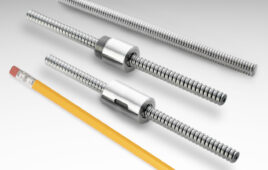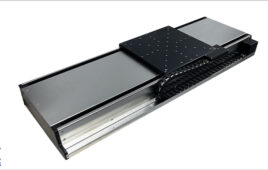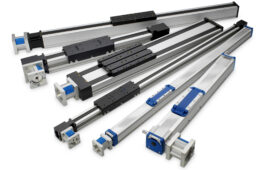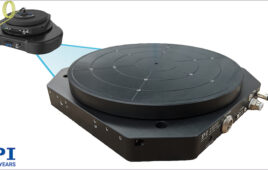When we talk about the positioning capabilities of a linear motion system, we typically talk about accuracy and repeatability, and in some applications — especially those driven by stepper motors — we may also be concerned with resolution. But accuracy and repeatability define a system’s ability to reach its commanded position and to do so over multiple attempts. And resolution doesn’t directly relate to a system’s motion, per se — it specifies the smallest increment a system can measure or display. If the application calls for very small, precise movements, we need another specification — we need to know the system’s minimum incremental motion (MIM).
Accuracy is a system’s ability to reach the commanded position within an acceptable amount of error. Repeatability defines how well a system reaches the same position over multiple attempts under identical conditions.

Minimum incremental motion is typically defined as the smallest increment of motion a device can produce consistently and reliably. It’s also sometimes referred to as practical resolution or typical resolution. A system’s MIM is influenced by both mechanical and electrical components — the screw or other drive mechanism, the guide system, the motor, the controller, and the encoder. Because so many variables are involved, and because friction is challenging to accurately model, the MIM of a system is determined empirically rather than by theoretical calculations.
Although the terms “resolution” and “minimum incremental motion” are sometimes used interchangeably, the resolution of a linear motion system depends primarily on the system’s encoder. For linear encoders, resolution is typically defined by the distance (in microns or nanometers) between lines, and for rotary encoders, resolution is defined by the number of counts or pulses per revolution.
It’s important to note that resolution can be significantly smaller than minimum incremental motion, and because the terms are sometimes used interchangeably, be sure you understand which one a manufacturer is referring to when reviewing technical specifications.
Factors that limit a system’s minimum incremental motion include internal friction and preload in bearings, as well as compliance, or windup, in rotating components such as screws and couplings. This is why direct-drive systems — such as linear motors, piezo motors, and voice coil actuators — typically provide the smallest MIM values of any linear system.

When minimum incremental motion is most critical, linear stages with non-recirculating bearings, such as crossed roller slides or air bearings, are often used, since these components have little or no friction. In these cases, the system’s MIM is primarily limited by noise in the system rather than mechanical factors such as stick-slip.
Although minimum incremental motion isn’t a specification you’ll encounter when working with typical components for pick-and-place or transport applications, it is often given for high-precision linear stages and other motion systems used in applications such as metrology, microscopy, and nanopositioning.

Image credit: Newport
Filed Under: Linear Motion Tips




